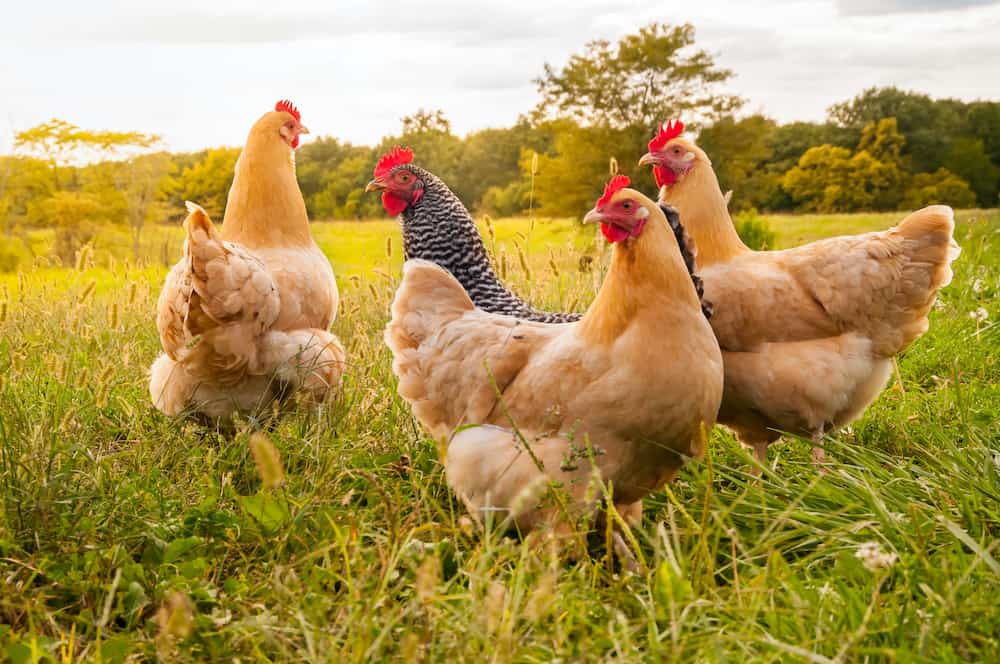Best Chicken Breeds – When it comes to building your backyard flock, it’s best to understand what chicken breeds are out there. Whether you already have a flock or are planning on creating one, knowing the different breeds can help you find chickens that suit your lifestyle.
Multiple factors go into choosing which chicken breeds you need. Considering the climate, whether or not you want to pluck the chickens, or even use them as a meat source are all the questions you need to ask yourself.
Knowing what type of chicken you want is how you can narrow down your search. What is your top purpose, eggs, meat, as a pet, or for exhibition?
If it’s to have chickens that lay an abundance of eggs, consider the best egg laying chickens. If you want to raise a flock primarily for meat, consider the best meat chickens.
Many homesteaders choose a mix of the two, and choose a dual purpose breed. This means the the chickens will lay eggs and also be a source of meat.
It can be a difficult task and can become exhausting researching each type, especially with so many breeds to choose from. Here we’ve listed the top ten breeds you’d want for rural living. Each of these chicken breeds has several advantages.
We will describe the different breeds and which ones are ideal based on climate, temperament, and production.
Best Chicken Breeds to Choose From

Ameraucana Chicken Breed
The Ameraucana chicken breed is one of the heartiest, easiest and most enjoyable chicken breeds to have in your yard.
It’s a relatively new breed, having been created a mere fifty years ago, but it’s rapidly becoming one of the most popular backyard pets for people who love fresh eggs and low maintenance chickens.
The Ameraucana chicken is an upgraded version of the Araucana breed, which was known for having a fatal genetic flaw that seriously injured their bloodlines.
The Ameraucana is an upgraded version that doesn’t have the genetic flaw but retains all of the positive aspects of the Araucana.
They are notable for their beautiful blue-hued eggs. Although these eggs are arguably much prettier to look at than brown or white eggs, they are just as nutritious.
They are very robust and easy-going creatures. They are also relatively small, weighing only about six pounds.
You won’t have to do much to keep your lovely hens happy, but they do like a little bit more room in their chicken coops. Additionally, most of them will only lay about four eggs a week, and many start laying later than other types of chickens.
Even so, most fans of this chicken breed will agree that the benefits far outweigh the downsides. Compared to other types of breeds, Ameraucanas are easy chickens to raise and could even make excellent pets.
Expect to have your Ameraucana chicken for about eight years, although their laying will slow down substantially in their later life. Overall, these animals are prized among those who know chicken breeds.
You can’t beat their temperament, and they are highly unlikely to attack any of your other pets or children. Additionally, they are hardy animals with health genes, so the chicks are likely to survive.
Australorp Chicken
The Australorp is one of the best beginner-friendly chickens and best chicken breeds you can find on the market.
Any homestead or rural home can benefit from keeping a small flock, especially since the breed has dual-purpose. Their eggs and their meat are high in nutrition and can provide a steady income or food source for the breeders.
An Australorp can lay up to 250 brown eggs annually, which are medium-sized.
If placed in an area with less stress and a free-range setup, they can produce even more eggs. That said, their food and water will need to be adjusted accordingly.
Their temperament is easy going, and they are generally friendly to everyone around them. Unlike other breeds, they don’t possess any aggressiveness or bully each other. This makes them one of our most recommended birds, as beginners will find them easy to raise.
The American Poultry Association has deemed the standard includes a pure black aesthetic. However, there are black, blue, and white mixes with additions of other colors.
It’s a heavyset bird that can weigh around eight pounds and includes soft, lightweight feathers.
Major Consideration:
The only possible downside with this breed is that they are genetically born to thrive in hot environments. This makes them ideal to raise in a hot climate, such as the southwestern United States. However, they aren’t suited to climates with cold winters.
So, depending on where you live, they may be a perfect addition to your backyard farm. They are one of the most common and ideal breeds for a newcomer.
Easter Egger Chickens
The Easter Egger chicken is one of the most favored backyard breeds of any homestead owner. These vibrant birds can produce a high number of eggs within one year.
Over the course of one year, they can lay up to 200 eggs. What’s more interesting is that the Easter Egger got its title due to laying a wide variety of egg colors, including blue, pink, and green-tinted eggs.

If you’re looking for a mass egg producer, you may want to skip this breed, though. They may produce high-quality eggs, but they are slow to start and produce less than other breeds.
Their plumage comes in multiple colors and can be useful for other crafts, though. Additionally, caring for an Easter Egger chicken is quite simple.
They have outgoing personalities and do well with other flocks. Their friendly demeanor makes them ideal for farms or small nests. That said, they need a rich environment to explore. Having a yard or gated area for them to freely roam is recommended.
Their disposition is friendly, and they are very good with other animals, but they do have a tendency to get picked on. If you’re mixing them with other types of animals, it’s suggested to keep a watchful eye on them.
Other breeders also seclude their coop and allow each chicken to have their personal space.
Major Consideration:
While we didn’t find any major disadvantages to owning Easter egger chickens, we can list a few issues.
First, they enjoy open space and a rich environment, which means you can’t keep them in confinement. They also need to have proper nutrition for the eggs to turn out well. You can achieve this easily with the right diet and supplements.
Leghorn Chicken
If you’re looking for a flock that can mass produce eggs, then you can’t go wrong with the Leghorn. It’s a beloved chicken and one of our favorite best chicken breeds.
These birds lay up to 280 white eggs annually and make a perfect addition to any rural dwellers. One chicken alone can provide up to five eggs a week, which is faster than most other breeds.
Additionally, they are also multi-purpose birds and can be used for plumage as well. Their plumage ranges in color, but most of the breed has either cream, white, or silver feathers.
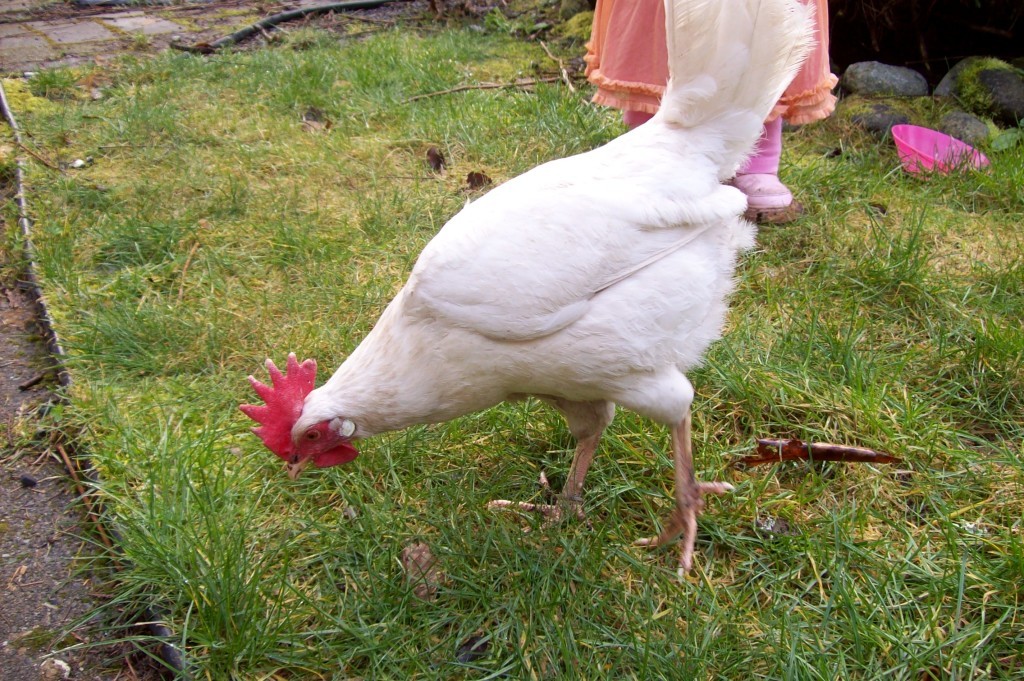
Leghorns are intelligent and active chickens that need adequate stimulation to keep them occupied. They love climbing and jumping onto fixtures, even some nest in trees.
They are definitely not ideal for those who have neighbors, as the breed can be a bit noisy at times. Other than that, they do tolerate confinement, but they will need things to keep them occupied.
Adding chicken toys, tricks, treats, and activities for them to do inside a coop can help keep them happy.
They aren’t that fond of human contact, so it’s best to keep your distance. Many Leghorns have different dispositions based on what their parent’s temperaments were like.
Major Considerations:
Something to consider before adding Leghorns to your flock is they are well-adjusted to warmer climates. Therefore, if you live in a cold weather climate during wintertime, you may want to choose a different breed.
Another concern with the breed is that they are extremely antisocial and skittish. They don’t like being around other animals and don’t do well in a flock of mixed breeds.
If you’re expecting a pet-like chicken, then we highly recommend skipping this breed.
Delaware Chickens
The Delaware chicken is a dying breed that needs to be bred by more farmers. They are beautiful white and blackbirds that produce both eggs and plumage.
This makes them a dual-purpose chicken and allows them to produce products weekly. The Delaware chicken chicken has beautiful white or silver feathers for its main body. Their necks, wingtips, and tail have a mixture of grey and black feathers.
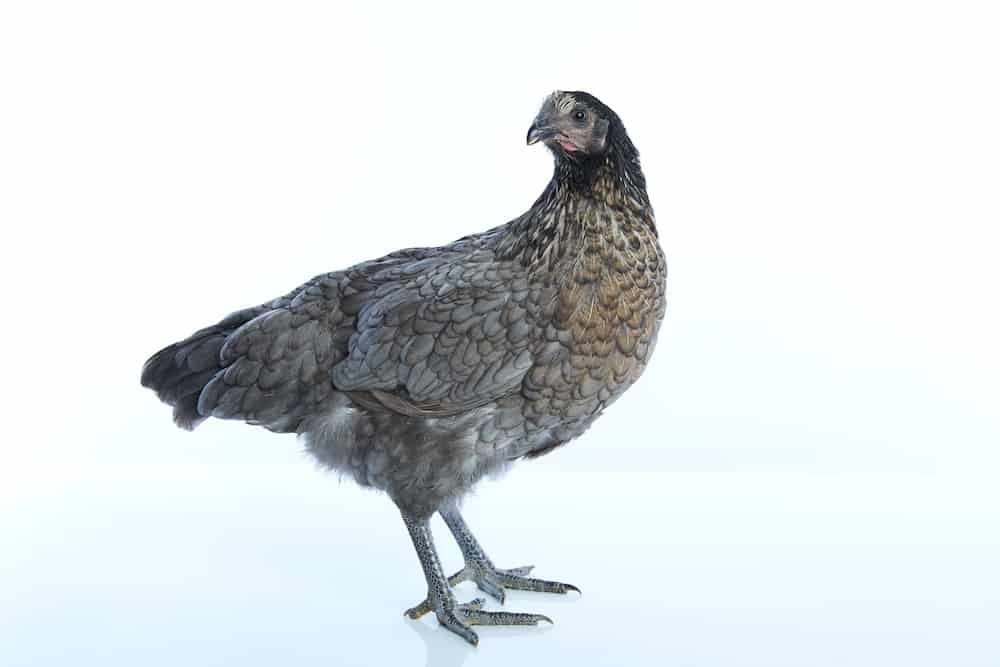
This gives them a pretty unique look and makes them stand out amongst other breeds. Generally, a Delaware chicken can produce up to five eggs every week.
After a year, that number would total to be around 240 eggs. While this is slower than some other breeds, the eggs are large. They are reliable layers.
The temperament of the Delaware chicken is very calm and collected. Compared to other breeds, they tend to get along with everyone and everything. These birds are very curious and tend to enjoy having a stimulating environment.
If you’re going to coop them up, it’s recommended that you include toys and craft play spaces to keep their minds occupied.
Major Consideration:
While Delaware chickens do well in cool climates, they do suffer from sensitive wattles and ear lobes. If you’re planning on having them roam around outdoors in winter, it’s best to apply some Vaseline. This helps keep them warm and prevents their skin from chapping.
Bantam Chickens
Certain chicken breeds have smaller versions which are called bantams. While technically not a chicken breed, bantams are an under-rated chicken that has over 400 different varieties.
The word “bantam” refers to their small stature and ability to survive in small areas.
Of course, this also means that the eggs they produce are half the size of regular eggs. Depending on which crossbreed you get, a Bantam bird is around one third smaller than a standard-sized chicken.
To put this in perspective, a standard chicken weighs around five pounds while a Bantam chicken can weigh 15 ounces. (Double this size if you choose a cochin chicken which is a heavier breed.)
Their small stature makes them ideal for those living not just in rural areas but also in urban areas or limited space.
Due to their friendly disposition, they can easily survive in either a confined area or small coop. As long as they have enough space to flap their wings, they are generally happy. Everything can be smaller with bantams, including their chicken nesting boxes.
Their disposition can be described as lovely and energetic.
A bantam chicken will thrive off of social interactions with each other or their owners. As long as you give them attention and adoration, they will continue to prosper.
A small chicken to consider that is a true bantam is a Serama chicken. It’s the smallest in the world.
Major Consideration:
A major issue with this breed is that it’s hard to tell what their temperament will be. Some will be friendly while others more aggressive. With over 400 species of Bantam chicken, it can be challenging to find one that suits your needs. Finding ones that have been bred for specific genetic traits is your best bet.
Rhode Island Reds Chicken
The Rhode Island Red is one of the most common breeds used in farms across the world. These chickens are known for producing a high yield of eggs every year and having beautiful brown plumage.
Due to their aggressive behavior, though, it’s not recommended for beginners to raise them.

They are prone to getting into fights with one another and can even pick on other animals. If you’re going to attempt to raise them, you need to keep a careful eye on them so that they don’t act out.
While some Rhode Island Reds are bullies, others can be sweet and friendly. The overall demeanor is very aggressive and independent.
They will walk around like they own the place and are known for being tricksters. They are mainly territorial birds, so giving them their own space can greatly benefit animals around them. As for their production rates, they tend to lay at least 300 eggs every year.
Weekly, you can expect them to lay five to six eggs every seven days. These eggs are large and are light brown.
Other production includes using them as meat, and they don’t taste much different from your quality chicken at the supermarket.
Major Consideration:
The only downside we’ve found with them is their behavior. They can be extremely challenging for a beginner as you will need to train and prevent their aggressive attitude. Once you have everything in control, it’s likely to become easier for you to manage.
Silkie Chickens
If you’re looking for chickens that have alluring appearances, the Silkie Chicken would be a good fit. They are very popular due to their furry bodies and adorable demeanor. They are commonly referred to as the teddy bear bird due to their fluffiness.

Silkies may be challenging for beginners because they are very skittish and may need protection. Particularly, if you have multiple breeds of chickens, they will become susceptible to bullying.
Placing them in a secluded area can help prevent them from being picked on. Silkies lay around three eggs every week, which is one of the slowest out of them all.
You’ll get around 120 eggs each year, and they are small in size. Compare this to your standard, and you’ll find that it’s almost nothing compared to other breeds.
If you’re going to get a Silkie, it should be for their personality and appearance. These birds are amazingly docile and get along well with humans and other pets. They tend to enjoy being in environments where they can come into contact with humans. They also make lovely pets and will even play with children.
Major Consideration:
The only downside we’ve found to the breed is that they are susceptible to bullying. Other than that, there aren’t any other issues.
Their thick fur-like coat helps protect them in winter environments but may cause them to overheat if placed in a warm climate. If placed into a warm climate, you must give them proper shade to hide from the sun.
Sussex Chickens
An easy-going breed that is suitable for beginners is the Sussex chicken. They are dual-purpose and yield a high amount of eggs every year. If you’re looking for a snappy bird that is both easy to control and comes in variable colors, then the Sussex is for you.
For production, the bird can produce up to 250 eggs each year. This is around the average number that other chicken breeds can produce. The main difference is that these birds can be used as a food source.
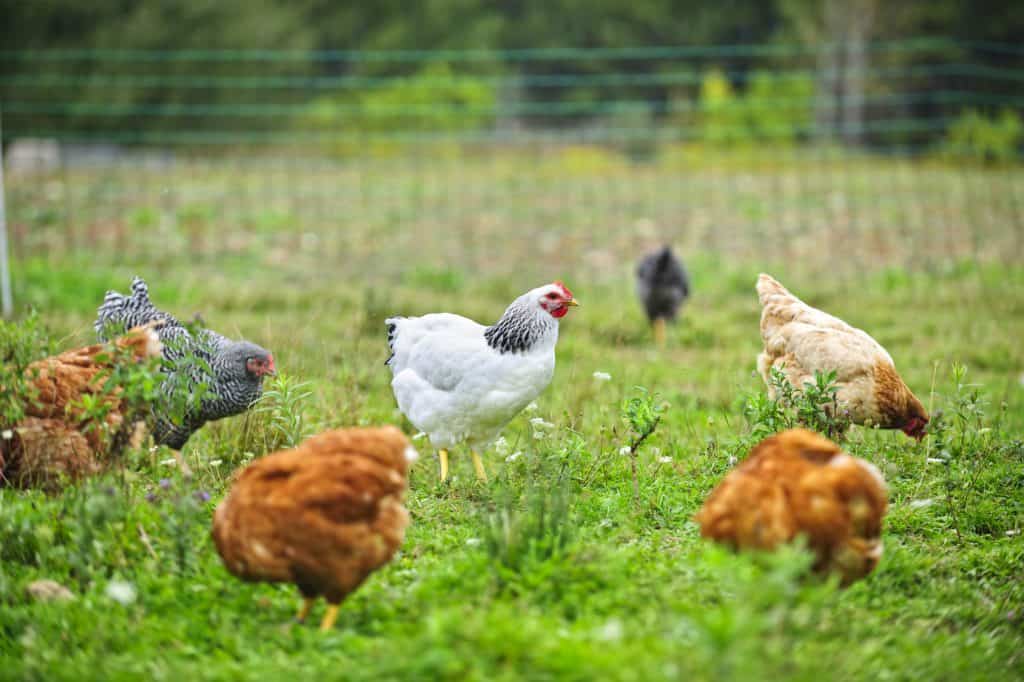
They are highly nutritional and can provide a steady source of meat for your family. Their disposition is generally easy to handle, and they are rarely very active. Breeders describe them as confident yet friendly.
They love to forage and explore, which makes them ideal for those looking to give them plenty of space. Gardens and other greenery outdoors makes the perfect environment for this breed.
Overall, the Sussex is low maintenance birds and don’t require much effort to take care of. They don’t need any supplements, special handling, or treatments.
This makes them ideal for first-time farmers or those looking to build a backyard coop. That said, they can be susceptible to parasites, so it’s recommended to clean the coop when necessary.
Major Consideration:
The only major downside we’ve been able to find is that they won’t produce a standard breed until paired with similar sex-linked roosters. If not, you won’t have starter chickens that have the same genetics as their parents. Instead, they will lose out and most likely have a whole host of health issues.
Plymouth Rock Chickens
Amongst all the heritage farm breeds, the Plymouth Rock chicken is the most popular. They are known for having a zebra-like pattern and color scheme.

Their first known trait, though, is that they have a calm demeanor and are perfect for those looking to expand their flock. For production, the breed can produce up to 280 brown eggs annually.
To put this in perspective, most other breeds only reach 250 eggs every year. If you’re not planning on using them for egg production, then they can also be used as a steady meat source.
The Plymouth Rock has a black and white barred feather look. The barred colors are different between males and females. They are often called Barred Rocks.
A Plymouth Rock chicken has a large body and is one of the more robust chickens. The females weigh around five pounds while males can get up to nine pounds.
As for their disposition, they are known for being friendly around other animals and people. They make excellent pets and even welcome young children. If you’re looking for a hen that can be more like a house pet, then you will definitely love the Plymouth Rock chicken.
If you can find chicks, also consider raising a Sapphire Gem chicken. They are also called Blue Plymouth Rock and Sapphire Blue Plymouth Rock. They’re a hybrid chicken. Hens lay 300 large brown eggs per year.
Major Consideration:
The only downside we’ve been able to find about them is that they are chatty. They aren’t as loud as other birds, but they do tend to chatter amongst themselves. This likely won’t bother the neighbors, but their constant chatter is something to be aware of.
Black Star Chickens
The Black Star chicken is one of the most popular hybrid and best chicken breeds on the market. It’s only been recently that these chickens were added to the backyard chicken world.
Black Stars are medium-sized chickens that weigh around six pounds. They have unique, vibrant colors in their feathers and come in either brown, orange, or black. They have a single red comb. Their plumage is striking and fluffy, with many thick feathers sticking out.
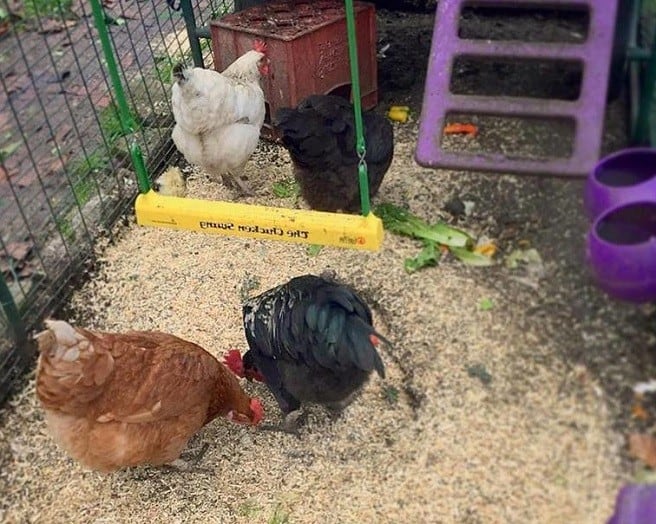
As for production, you can expect the Blackstar to produce up to five eggs per week. That’s over 250 eggs over a year. These birds also have plenty of beautiful and unique plumage that is perfect for picking.
Their disposition is a bit different from others. While they enjoy being free-range, they also enjoy their own space. They are overall quiet and don’t produce much noise at all.
The breed is friendly with humans, other animals, and children. Additionally, they are very tame and will even cuddle with you.
Major Consideration:
The only downside to this breed is that they aren’t reliable broody types. If you plan to mass-produce Black Stars chickens, it’s important to choose and get a good incubator. This can help you reliably produce more chickens without having to rely on them sitting their eggs.
Other Chicken Breeds to Consider
Brahmas
The Brahma chicken is also a top choice when deciding which chicken breed to begin or add to your flock. It’s a dual-purpose fowl, producing eggs as well as meat. In addition, it’s hardy in many temperatures. With proper shelter, it will thrive in cold winters, warm springs, and hot summers.
Orpingtons
Orpington chickens are friendly and ideal for beginners. They are good egg layers and also can be used for meat, making them a dual-purpose chicken. They aren’t aggressive, so you’ll need to raise them with other even-tempered breeds. Consider adding a Buff Orpington and Lavender Orpington to your flock. Orpington roosters aren’t aggressive either.
Their feathering makes them ideal for colder climates.
Other Breeds
Another one of the best chicken breeds to consider is the Wyandotte chicken. They are a dual purpose breed. Learn about adding a Golden Laced Wyandotte and a Blue Laced Red Wyandotte to see if they are a good fit for your flock.
The Golden Comet chicken is a high egg producer and is hardy to cold and heat. It isn’t ideal as a meat breed, however. Hens are even-tempered and easy to raise.
Black Copper Marans lay richly colored eggs ranging in colors such as reddish, copper, caramel, and dark chocolate. They lay 150 – 200 eggs per year.
The Swedish Flower Hen chicken is a landrace breed that lays 150 – 200 eggs annually. They are friendly and beautiful chickens that do well with opportunities to forage.
How Do I Know Which Chicken Breed Is Best?
Since it can be hard to narrow down the list, even from the top ones we’ve mentioned, we’ll help walk you through how you can eliminate a few. Here are some important considerations:
Climate
First, ask yourself what type of climate you’re going to be living in. From there, eliminate breeds that don’t do well in hot or cold climates. No matter where you live, chickens will require shelter as well as protection from the sun, storms, and cold temperatures.
Purpose
After that, ask yourself what the main purpose is for your chicken production. Are you planning on breeding them as pets? Or are you planning on using them for eggs and meat? What about plumage?
If you can narrow it down to those three, it becomes more apparent on which chickens you’ll want.
Additionally, for a rural living, it’s important to understand how much a chicken can support you. Their eggs provide a constant source of food, nutrition, and protein. With just a few hens, you can easily produce enough eggs for your family weekly. Choosing a breed such as the ISA Brown means you will enjoy 300 eggs per year, per hen, even in the winter months.
If you’re looking to make a profit, they will overall exceed the number of eggs sold than the cost of raising them. If you’re not planning on using their eggs, you can always switch to either using their plumage or using them as livestock.
Either way, once you have a small backyard set up, you can easily sustain yourself. With broody hens, their eggs will hatch, and you’ll have more chickens without having to invest more money.
Experience and Space
Lastly, think about what experience you have and how much space you’re able to provide the chickens. If you’re a novice, then it’s best to avoid breeds that are either too skittish or too aggressive.
Additionally, those that need more than a confined space will need to be supervised as they roam freely outdoors. After answering those questions, you should be able to narrow down your list to at least two to three different choices.
Just remember, we listed the most common and easy-to-breed chickens on this list. However, there are numerous other breeds out there that may work well with your homestead.
Best Chicken Breeds For Your Backyard
When it comes to choosing the best chicken breeds for your homestead, it’s best to consider it carefully. Learn how to raise backyard chickens as well as what they need to thrive.
Many breeds, such as Ameracauna chickens, have different traits and provide various types of produce. If anything, they can even make a great pet to have just to liven up your backyard.
We hope that we’ve helped you learn more about the types of chicken breeds out there.
Learn more:

